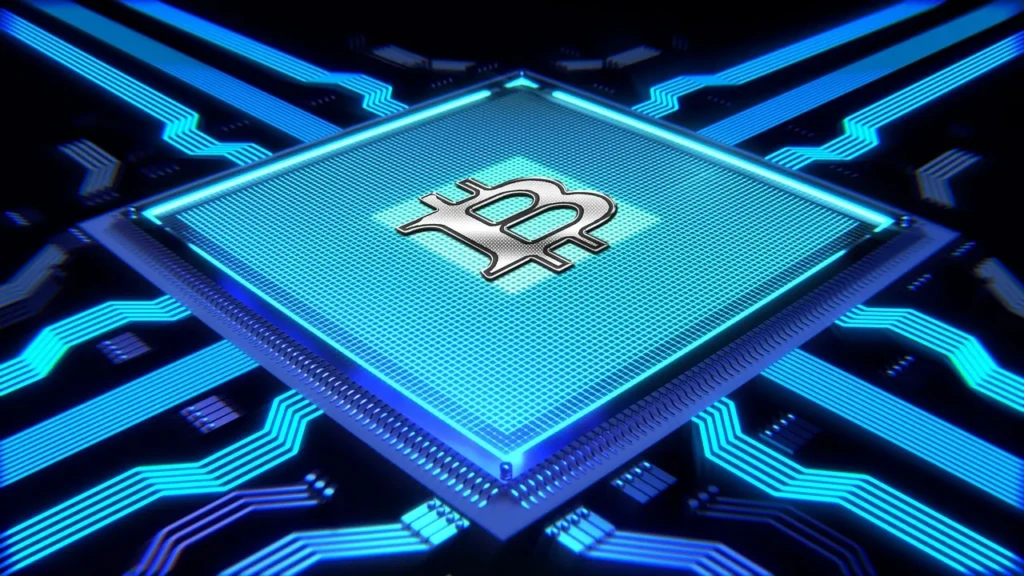Moore’s Law—originally coined by Intel co-founder Gordon Moore in 1965—predicts that computing power doubles roughly every two years while costs fall. But what is Moore’s Law in crypto? In the blockchain world, this principle takes on fresh significance, shaping everything from mining hardware to network scalability. Understanding its impact reveals where cryptocurrency technology is headed and why investors, developers, and miners should care.
Moore’s Law: From Silicon to Satoshi
Before diving into crypto, it’s essential to grasp the law’s origins. Gordon Moore observed that the number of transistors on integrated circuits was doubling at a steady pace, slashing costs and boosting performance. This trend underpinned decades of exponential growth in computing, enabling smartphones, cloud computing, and artificial intelligence.
In crypto, what is Moore’s Law in crypto essentially refers to applying this same observation to blockchain networks, mining equipment, and cryptographic processes. As chips become faster and cheaper, blockchain protocols can process more transactions, while miners achieve higher hash rates with less energy.
The Hardware Connection
Mining is the most obvious arena where Moore’s Law plays out. Each new generation of ASIC (application-specific integrated circuit) miners offers greater processing power per watt. According to Cambridge Centre for Alternative Finance, improvements in mining efficiency have kept Bitcoin’s energy footprint from growing as fast as its hash rate. Without the steady doubling of transistor density, this balance would be impossible.
Blockchain Scalability and Moore’s Law
Scalability remains a central challenge. Bitcoin and Ethereum, for example, face limits on transactions per second. Faster hardware—driven by Moore’s Law—can help, but only to a point. Protocol-level innovations such as sharding and rollups also matter.
Yet, what is Moore’s Law in crypto if not a reminder that computational capacity will keep improving? Ethereum’s recent upgrades leverage more efficient cryptography, enabling higher throughput as processors evolve.
Layer 2 and Hardware Synergy
Layer 2 solutions like Optimistic Rollups depend on cost-effective computation for fraud proofs and data availability. As chips become cheaper and more powerful, verifying massive batches of transactions becomes easier. This synergy between hardware progress and protocol design embodies Moore’s Law in crypto.
Mining Economics and Energy Efficiency
The economics of mining reflect the law’s influence. As hardware gets faster, miners must stay competitive by constantly upgrading. Historical data from CoinShares Research shows a consistent trend of hash rate rising while cost per hash falls.
However, there’s a catch: if everyone upgrades simultaneously, network difficulty climbs, cutting margins. Thus, what is Moore’s Law in crypto also includes the relentless arms race among miners.
Environmental Implications
Improved chip efficiency can reduce energy per transaction, but total energy usage may still grow if the network hash rate surges. This paradox—known as the Jevons effect—complicates sustainability arguments.
Beyond Mining: Cryptography and Security
Faster hardware also impacts cryptography. Advanced processors accelerate zero-knowledge proofs, homomorphic encryption, and other privacy-preserving techniques. Projects exploring zk-SNARKs or STARKs depend heavily on compute power.
If Moore’s Law slows, some cryptographic ambitions could face delays. Conversely, continued progress enables more secure, complex systems at lower cost.
Post-Quantum Concerns
Quantum computing introduces uncertainty. Should quantum machines advance faster than classical chips, current encryption standards might become vulnerable. In this context, what is Moore’s Law in crypto involves anticipating quantum breakthroughs and developing post-quantum cryptography.
Market and Investment Outlook
For investors, Moore’s Law shapes hardware manufacturers’ margins and the profitability of mining operations. Companies that design ASICs or GPUs stand to benefit as long as transistor scaling continues.
Institutional players watch these trends closely. A slowdown in chip improvements could constrain network growth and impact valuations of high-throughput chains.
Challenges to Moore’s Law in Crypto
While historical data shows steady improvement, transistor scaling is approaching physical limits. Semiconductor manufacturers like TSMC now rely on extreme ultraviolet lithography to keep shrinking node sizes. Costs are rising, and doubling every two years is no longer guaranteed.
This slowdown could affect mining profitability, transaction fees, and the feasibility of complex smart contracts. Developers may need to rely more on software optimizations than raw hardware gains.
FAQs: What Is Moore’s Law in Crypto?
Q1: What is Moore’s Law in crypto and how does it apply to mining?
Moore’s Law in crypto describes how increasing transistor density drives more efficient mining equipment, allowing higher hash rates and lower energy use.
Q2: Does Moore’s Law in crypto guarantee faster blockchain transactions?
Not directly. While hardware improvements help, protocol-level upgrades like sharding and Layer 2 scaling are equally crucial.
Q3: Is Moore’s Law in crypto slowing down?
Yes, the traditional pace of doubling is slowing as chip fabrication approaches atomic limits, potentially impacting mining economics and cryptographic advances.
Q4: How does Moore’s Law in crypto affect energy consumption?
More efficient chips reduce energy per hash, but total network energy can rise if overall hash rate increases.
Q5: Can quantum computing break Moore’s Law in crypto?
Quantum computing represents a different paradigm. If it outpaces classical Moore’s Law, existing cryptographic methods may need rapid upgrades.
Conclusion: The Road Ahead
Understanding what is Moore’s Law in crypto reveals both opportunity and risk. As semiconductor advances slow, miners, developers, and investors must adapt. Software innovation, protocol upgrades, and energy efficiency will be vital to maintain growth.
The crypto ecosystem thrives on exponential change, but physics imposes limits. The next decade will test whether blockchain’s evolution can outpace the waning momentum of Moore’s Law—or whether new paradigms, such as quantum computing or novel architectures, will define the future of decentralized technology.

